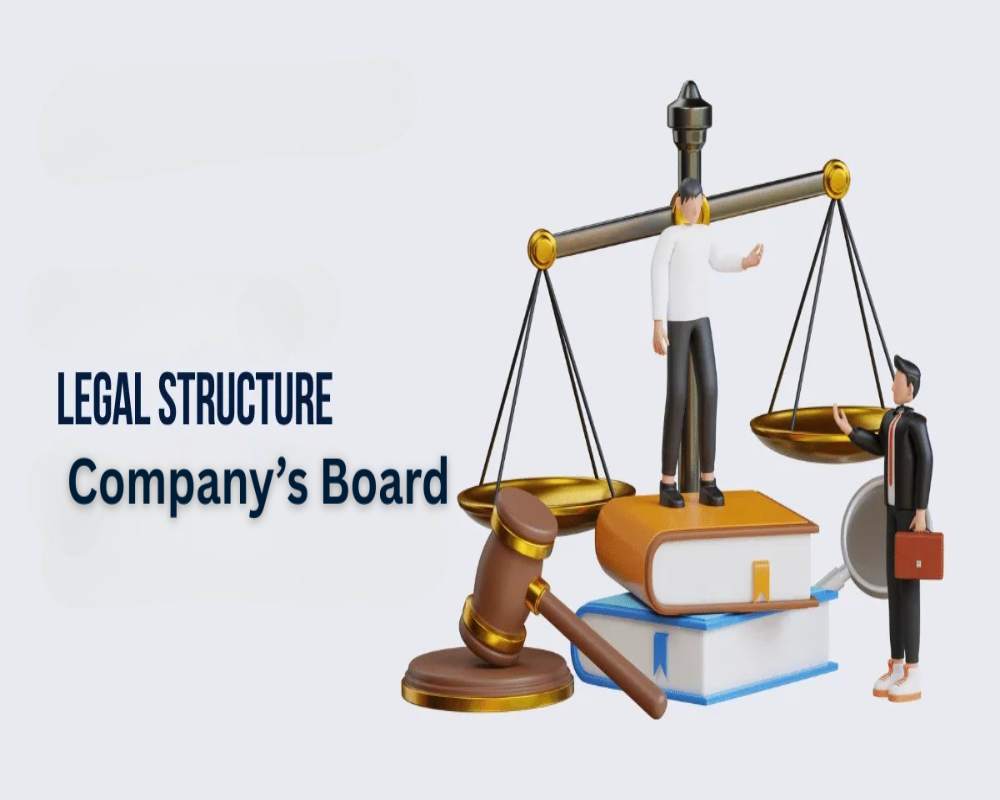Legal Structure of a Company’s Board
Introduction
The Board of Directors is the central decision-making body in a company, responsible for overseeing governance, setting strategic direction, and ensuring legal compliance. Under the Companies Act, 2013, the board functions as an agent of the company and acts in a fiduciary capacity on behalf of the shareholders. The legal structure of a company’s board is defined by statutory provisions, the company’s Memorandum and Articles of Association, and applicable regulatory guidelines. This article explains the legal structure of a company’s board, highlighting its composition, roles, and operational framework.
Minimum and Maximum Number of Directors
As per Section 149 of the Companies Act, 2013:
- A private limited company must have at least two directors
- A public limited company must have at least three directors
- A One Person Company (OPC) must have at least one director
The maximum number of directors a company can have is fifteen, but this can be increased by passing a special resolution in a general meeting.
Types of Directors
The board may include different categories of directors, each serving a unique function:
- Executive Directors: Full-time directors involved in daily management
- Non-Executive Directors: Offer strategic input without managing day-to-day affairs
- Independent Directors: Required in listed and certain public companies, ensuring unbiased governance
- Nominee Directors: Appointed by banks or investors to protect their interests
- Alternate Directors: Appointed temporarily when a director is absent for a prolonged period
Appointment and Qualification of Directors
Directors must possess a valid Director Identification Number (DIN). Their appointment is governed by:
- Section 152 (general appointment through shareholder resolution)
- Section 161 (appointment of additional, alternate, or nominee directors by the board)
Directors are usually appointed in a general meeting with shareholders’ approval unless otherwise permitted by the Articles of Association.
Duties and Responsibilities
Directors must act in good faith, exercise due diligence, and uphold the interest of the company and its stakeholders. As per Section 166, their duties include:
- Avoiding conflict of interest
- Not gaining undue advantage
- Acting in accordance with the company’s constitution
- Promoting the objectives of the company
Board Meetings and Quorum
The board must meet at regular intervals:
- At least four board meetings in a year with a maximum gap of 120 days between two meetings (for most companies)
- Two meetings per year for small companies and OPCs
A minimum of one-third of the total directors or two directors, whichever is higher, must be present to constitute a quorum.
Powers of the Board
Under Section 179, the board has powers to make decisions on matters like:
- Borrowing and investing funds
- Approving financial statements and reports
- Appointing key managerial personnel
- Opening or closing bank accounts
However, certain powers can only be exercised with shareholders’ consent through a special resolution.
Resignation and Removal
A director may resign by giving written notice to the company, and the company must intimate the ROC through Form DIR-12. Removal can occur through:
- Shareholder resolution under Section 169
- Automatic disqualification under Section 164 for legal non-compliance or default
Compliance and Disqualification Provisions
Directors must comply with various statutory obligations, including:
- Filing annual KYC (DIR-3 KYC)
- Attending at least one board meeting per year
- Avoiding default in filing annual returns or financial statements
Non-compliance may lead to disqualification, penalties, or even prosecution depending on the severity.
Conclusion
The legal structure of a company’s board is designed to balance authority, accountability, and transparency. Directors are the custodians of corporate governance and must operate within a clearly defined legal and ethical framework. By understanding the structure and responsibilities of the board, companies can ensure lawful conduct, stakeholder trust, and effective leadership in their organizational journey.
Hashtags
#CorporateGovernance #BoardOfDirectors #LegalStructure #CompanyLaw #BusinessLeadership #CorporateStructure #BoardResponsibilities #GovernanceFramework #BusinessCompliance #DirectorDuties #CompanyManagement #LegalCompliance #BoardMeetings #CorporateStrategy #BusinessEthics #ShareholderRights #NonProfitBoard #ExecutiveLeadership #CorporateAccountability #BusinessSuccess


0 Comments